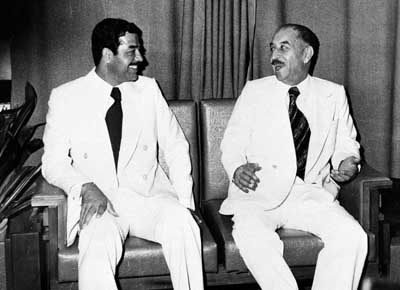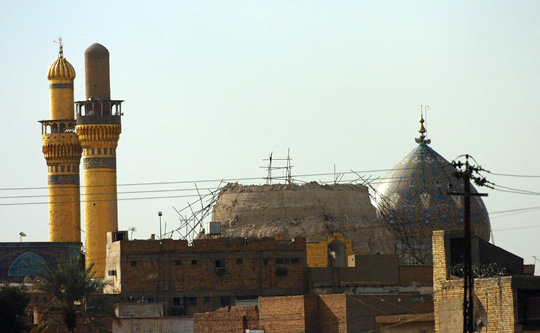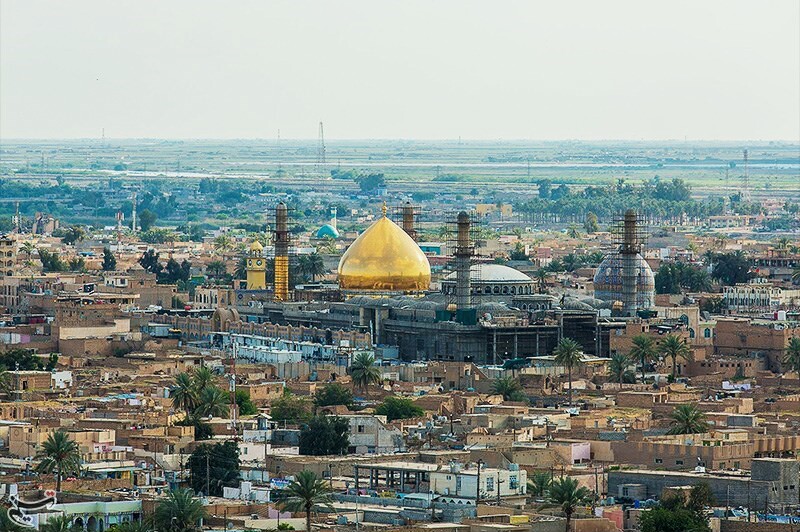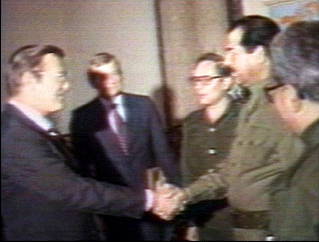|
Ghazaliyah
Ghazaliya () is a neighborhood in the western outskirts of Baghdad, Iraq, in the city's Mansour district. To the north of Ghazaliya is the neighborhood of Al-Shu'ala, to the east is Al-Adel, to the south is Al Khadhraa, and to the west is Abu Ghraib. It is a working-class neighborhood of about 100,000 residents. Ghazaliya is situated around six major streets that all end at farms that formerly belonged to Uday Hussein, the son of Saddam Hussein. Etymology There are two theories regarding the origin of the name Ghazaliya. The first theory suggest that the district got its name because the area used to be inhabited by gazelles (; or “ghazal”), and thus the place came to be known as “الغزالية”; that is, “Ghazaliya” or “the abode of the gazelles”. The second theory suggests the district is located at an area that used to be partially owned by a woman named غزالة (Ghazala). She and her sister Junyina were the owners of the land that is district Ghazaliya t ... [...More Info...] [...Related Items...] OR: [Wikipedia] [Google] [Baidu] |
Umm Al-Qura Mosque
The Umm al-Qura Mosque (), also known as the Umm al-Ma'arik Mosque (), is a Sunni mosque located in Baghdad, Iraq. It was the city's largest place of worship for Sunnis, but it has also become the location of a Shi'a hawza and a place of refuge for many fleeing the terrorists' depredations in the Anbar Province. It was designed to commemorate former Iraqi President Saddam Hussein's self-proclaimed victory in the Gulf War (1990–1991) and was intended to serve as a personal tribute to Saddam himself. It is located in the Sunni-populated al-Adel area of western Baghdad. Although never confirmed by the regime or himself during his lifetime, there has been speculation that it was intended to have been Saddam's final resting place. History The mosque cost 7.5 million to build, the mosque's cornerstone was laid on Saddam Hussein's 61st birthday on 28 April 1998. It was formally completed on 28 April 2001 in time for the ten-year anniversary of the Gulf War. The mosque was a part o ... [...More Info...] [...Related Items...] OR: [Wikipedia] [Google] [Baidu] |
Saddam Hussein
Saddam Hussein (28 April 1937 – 30 December 2006) was an Iraqi politician and revolutionary who served as the fifth president of Iraq from 1979 until Saddam Hussein statue destruction, his overthrow in 2003 during the 2003 invasion of Iraq, U.S. invasion of Iraq. He previously served as the Vice President of Iraq, vice president from 1968 to 1979 and also as the prime minister of Iraq, prime minister from 1979 to 1991 and later from 1994 to 2003. A leading member of the Ba'ath Party, Arab Socialist Ba'ath Party, he espoused Ba'athism, a mix of Arab nationalism and Arab socialism, while the policies and political ideas he championed are collectively known as Saddamism. Born near the city of Tikrit to a Sunni Islam, Sunni Arabs, Arab family, Saddam joined the revolutionary Ba'ath Party in 1957. He played a key role in the 17 July Revolution that brought the Ba'athists to power and made him Vice President of Iraq, vice president under Ahmed Hassan al-Bakr. During his tenure ... [...More Info...] [...Related Items...] OR: [Wikipedia] [Google] [Baidu] |
Al-Qaeda In Iraq
Al-Qaeda in Iraq (; AQI), was a Salafi jihadism, Salafi jihadist organization affiliated with al-Qaeda. It was founded on 17 October 2004, and was led by Abu Musab al-Zarqawi until its disbandment on 15 October 2006 after he was killed in a targeted bombing on June 7, 2006 in Hibhib, Iraq by the United States Air Force. The group was started as Jama'at al-Tawhid wal-Jihad in 1999. In 2004 it bay'ah, pledged allegiance to Osama bin Laden's al-Qaeda. Under the leadership of Abu Musab al-Zarqawi, AQI was engaged in various militant activities during the 2003–2006 phase of the Iraqi insurgency, early stages of the Iraqi insurgency, with the objective of expelling the Multi-National Force – Iraq, U.S.-led coalition and establishing an Islamic state in Iraq. In January 2006, AQI and seven other Sunni Guerrilla warfare, guerrilla groups formed the Mujahideen Shura Council (Iraq), Mujahideen Shura Council (MSC), which on 15 October 2006 disbanded to form the "Islamic State of Iraq." ... [...More Info...] [...Related Items...] OR: [Wikipedia] [Google] [Baidu] |
Samarra
Samarra (, ') is a city in Iraq. It stands on the east bank of the Tigris in the Saladin Governorate, north of Baghdad. The modern city of Samarra was founded in 836 by the Abbasid caliph al-Mu'tasim as a new administrative capital and military base. In 2003 the city had an estimated population of 348,700. During the Iraqi Civil War (2006–08), Samarra was in the " Sunni Triangle" of resistance. The archeological site of Samarra still retains much of the historic city's original plan, architecture and artistic relics. In 2007, UNESCO designated it a World Heritage Site. History Prehistoric Samarra The remains of prehistoric Samarra were first excavated between 1911 and 1914 by the German archaeologist Ernst Herzfeld. Samarra became the type site for the Samarra culture. Since 1946, the notebooks, letters, unpublished excavation reports and photographs have been in the Freer Gallery of Art in Washington, D.C. The civilization flourished alongside the Ubaid per ... [...More Info...] [...Related Items...] OR: [Wikipedia] [Google] [Baidu] |
2006 Al-Askari Mosque Bombing
At approximately 6:44 a.m. Arabia Standard Time on 22 February 2006, al-Askari Shrine in Samarra, Iraq, was severely damaged in a bombing attack amidst the then-ongoing Iraq War. Constructed in the 10th century, it is one of the holiest sites in Shia Islam. Despite the magnitude of the explosions, there were no casualties. American president George W. Bush asserted that the bombing had been carried out by Al-Qaeda in Iraq, which denied involvement in the attack. Although responsibility for the 2006 al-Askari bombing was not claimed by any party, the incident was followed by bouts of retaliatory violence among Iraqis, with over 100 dead bodies being found the next day and well over 1,000 deaths occurring over the course of a few days after the attack; some counts place the death toll at over 1,000 on the first day alone. [...More Info...] [...Related Items...] OR: [Wikipedia] [Google] [Baidu] |
Gulf War
, combatant2 = , commander1 = , commander2 = , strength1 = Over 950,000 soldiers3,113 tanks1,800 aircraft2,200 artillery systems , page = https://www.govinfo.gov/content/pkg/GAOREPORTS-PEMD-96-10/pdf/GAOREPORTS-PEMD-96-10.pdf , strength2 = 1,000,000+ soldiers (~600,000 in Kuwait)5,500 tanks700+ aircraft3,000 artillery systems , casualties1 = Total:13,488 Coalition:292 killed (147 killed by enemy action, 145 non-hostile deaths)776 wounded (467 wounded in action)31 tanks destroyed/disabled28 Bradley IFVs destroyed/damaged1 M113 APC destroyed2 British Warrior APCs destroyed1 artillery piece destroyed75 aircraft destroyedKuwait:420 killed 12,000 captured ≈200 tanks destroyed/captured 850+ other armored vehicles destroyed/captured 57 aircraft lost 8 aircraft captured (Mirage F1s) 17 ships sunk, 6 captured. Acig.org. Retrieved on 12 June 2011 , casualties2 = Total:175,000–300,000+ Iraqi:20,000–50,000 killed ... [...More Info...] [...Related Items...] OR: [Wikipedia] [Google] [Baidu] |
Christians
A Christian () is a person who follows or adheres to Christianity, a monotheistic Abrahamic religion based on the life and teachings of Jesus Christ. Christians form the largest religious community in the world. The words '' Christ'' and ''Christian'' derive from the Koine Greek title (), a translation of the Biblical Hebrew term '' mashiach'' () (usually rendered as ''messiah'' in English). While there are diverse interpretations of Christianity which sometimes conflict, they are united in believing that Jesus has a unique significance. The term ''Christian'' used as an adjective is descriptive of anything associated with Christianity or Christian churches, or in a proverbial sense "all that is noble, and good, and Christ-like." According to a 2011 Pew Research Center survey, there were 2.3 billion Christians around the world, up from about 600 million in 1910. Today, about 37% of all Christians live in the Americas, about 26% live in Europe, 24% live in sub-Saharan Afric ... [...More Info...] [...Related Items...] OR: [Wikipedia] [Google] [Baidu] |
Shia
Shia Islam is the second-largest branch of Islam. It holds that Muhammad designated Ali ibn Abi Talib () as both his political successor (caliph) and as the spiritual leader of the Muslim community (imam). However, his right is understood to have been usurped by a number of Muhammad's companions at the meeting of Saqifa where they appointed Abu Bakr () as caliph instead. As such, Sunni Muslims believe Abu Bakr, Umar (), Uthman () and Ali to be ' rightly-guided caliphs' whereas Shia Muslims only regard Ali as the legitimate successor. Shia Muslims assert imamate continued through Ali's sons Hasan and Husayn, after whom different Shia branches have their own imams. They revere the , the family of Muhammad, maintaining that they possess divine knowledge. Shia holy sites include the shrine of Ali in Najaf, the shrine of Husayn in Karbala and other mausoleums of the . Later events such as Husayn's martyrdom in the Battle of Karbala (680 CE) further influenced the ... [...More Info...] [...Related Items...] OR: [Wikipedia] [Google] [Baidu] |
Sunni Muslim
Sunni Islam is the largest branch of Islam and the largest religious denomination in the world. It holds that Muhammad did not appoint any successor and that his closest companion Abu Bakr () rightfully succeeded him as the caliph of the Muslim community, being appointed at the meeting of Saqifa. This contrasts with the Shia view, which holds that Muhammad appointed Ali ibn Abi Talib () as his successor. Nevertheless, Sunnis revere Ali, along with Abu Bakr, Umar () and Uthman () as ' rightly-guided caliphs'. The term means those who observe the , the practices of Muhammad. The Quran, together with hadith (especially the Six Books) and (scholarly consensus), form the basis of all traditional jurisprudence within Sunni Islam. Sharia legal rulings are derived from these basic sources, in conjunction with consideration of public welfare and juristic discretion, using the principles of jurisprudence developed by the four legal schools: Hanafi, Hanbali, Maliki and Shafi'i. ... [...More Info...] [...Related Items...] OR: [Wikipedia] [Google] [Baidu] |
Gazelle
A gazelle is one of many antelope species in the genus ''Gazella'' . There are also seven species included in two further genera; '' Eudorcas'' and '' Nanger'', which were formerly considered subgenera of ''Gazella''. A third former subgenus, '' Procapra'', includes three living species of Asian gazelles. Gazelles are known as swift animals. Some can run at bursts as high as or run at a sustained speed of . Gazelles are found mostly in the deserts, grasslands, and savannas of Africa, but they are also found in southwest and central Asia and the Indian subcontinent. They tend to live in herds, and eat fine, easily digestible plants and leaves. Gazelles are relatively small antelopes, most standing high at the shoulder, and are generally fawn-colored. The gazelle genera are ''Gazella'', ''Eudorcas'', and ''Nanger''. The taxonomy of these genera is confused, and the classification of species and subspecies has been an unsettled issue. Currently, the genus ''Gazella'' is widely ... [...More Info...] [...Related Items...] OR: [Wikipedia] [Google] [Baidu] |







